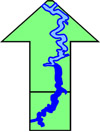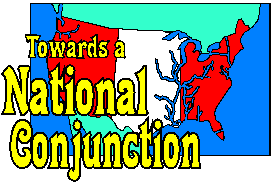
Upper Monongahela River Association
Menu
Home
This website is now used as a file archive.
It includes broken links, primarily because the sites referenced have been discontinued.
Please visit the new UMRA website
UpperMonRiver.org
The purpose of the Upper Monongahela River Association (UMRA) is to promote the general development of the Upper Monongahela River, primarily in West Virginia.Click here for a more detailed statement of our purpose.
Don Strimbeck, our Secretary, was interviewed as part of a US Department of Energy project to trace the history ofUPPER MONONGAHELA RIVER SERVICE RESTORATION
For the past three years UMRA, and other groups, have been involved in discussions with the US Army Corps of Engineers (USACE), our Congressional representatives, and local governments on a way of operating locks for recreational boats on the Upper Mon and Upper Allegheny using "contributed funds," non-federal money from regional and local sources.
Our Pittsburgh District USACE has become the first in the nation to negotiate agreements under the provisions of WRRDA 2014, the Waterways Resources & Reorganization Development Act of 2014.
Some "New" Local History
the National Energy Technology Laboratory. The full document NETL: A Century of Innovation can be found on the webite http://www.netl.doe.gov The entire book may be downloaded as a .PDF file. With regard to Mon Valley history, the story starts with "Chapter One: Pittsburgh — the Center for Coal." On the Upper Mon, there is a section "The Beginnings of Coal-Gasification Research at Morgantown" which can be found on page 153.
After he received his large paperback copy of the book Don remembered a newspaper supplement which was published when the Morgantown facility was opened. The UMRA Webmaster has scanned that to a .PDF file which may be found on this website at http://www.UpperMon.org/history/METC_Dedication-Morgantown_Post-13_May_1955.pdf .
Marcellus Shale Gas Drilling and its Impact on the MonongahelaFew people would ever guess that drilling for natural gas could significantly affect the movement of river barges, but recent events suggest otherwise. We are adding information regarding this new challange on a special webpage
Impact of Marcellus Shale Gas Drilling on Monongahela River
The latest official notices regarding navigation in the Pittsburgh District can be found at
Please Support Our Interim Solution For Upper Mon Lock Hours
We are continuing our dialog with the Corps on ways in which service might be improved, even with restricted funding. Two topics under discussion are listed below.
Because the Corps' activities are virtually all governed by Congressional actions - particularly appropriations- we regularly correspond with our representatives in the House and Senate. Most of our correspondence is open for public inspection here.
Canoes, kayaks, and other small craft can portage around locks, but safety and security issues need to be resolved.
Here is our letter to Col. Hill proposing improved portages.
Upper Monongahela River Automation Study
Pittsburgh District Corps of Engineers - March 2004
(The link above connects to a scanned copy of the report on this site.)
The 2004 Energy and Water Development Appropriations Act provided $342,000 for the Corps of Engineers to examine the practicality of remote control automation devices at the Hildebrand, Morgantown, and Opekiska Locks.
This report is an interim document in response to the Appropriations Act reporting requirement.
This interim report first addresses the merits of automation of the upper Monongahela facilities, the Morgantown, Hildebrand, and Opekiska Locks and Dams, operated by the Corps of Engineers, Pittsburgh District. It is followed up with a more detailed analysis of the full practicality of automation. Efforts for this study have concentrated at this time on the capacity to successfully engineer conceptual plans/alternatives for the automation of the Morgantown, Hildebrand, and Opekiska Locks and Dams and the future requirements to implement those plans and alternatives.
The report concludes that a tremendous need and opportunity exists to automate the Upper Monongahela River. A need exists for increased operating time for recreational boaters. Remote operations are practical and operable. The process of automation could provide increased service during a period of decreasing operating funds.
Other countries have found user operation of locks to be part of the solution to staffing cost problems. See Boat Crew Operation of River Thames Locks, Wallace Venable, April 2006 (325K .PDF file) for an English approach.



